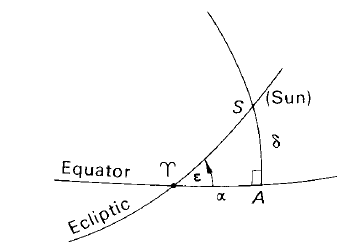
تاريخ الفيزياء

علماء الفيزياء


الفيزياء الكلاسيكية

الميكانيك

الديناميكا الحرارية


الكهربائية والمغناطيسية

الكهربائية

المغناطيسية

الكهرومغناطيسية


علم البصريات

تاريخ علم البصريات

الضوء

مواضيع عامة في علم البصريات

الصوت


الفيزياء الحديثة


النظرية النسبية

النظرية النسبية الخاصة

النظرية النسبية العامة

مواضيع عامة في النظرية النسبية

ميكانيكا الكم

الفيزياء الذرية

الفيزياء الجزيئية


الفيزياء النووية

مواضيع عامة في الفيزياء النووية

النشاط الاشعاعي


فيزياء الحالة الصلبة

الموصلات

أشباه الموصلات

العوازل

مواضيع عامة في الفيزياء الصلبة

فيزياء الجوامد


الليزر

أنواع الليزر

بعض تطبيقات الليزر

مواضيع عامة في الليزر


علم الفلك

تاريخ وعلماء علم الفلك

الثقوب السوداء


المجموعة الشمسية

الشمس

كوكب عطارد

كوكب الزهرة

كوكب الأرض

كوكب المريخ

كوكب المشتري

كوكب زحل

كوكب أورانوس

كوكب نبتون

كوكب بلوتو

القمر

كواكب ومواضيع اخرى

مواضيع عامة في علم الفلك

النجوم

البلازما

الألكترونيات

خواص المادة


الطاقة البديلة

الطاقة الشمسية

مواضيع عامة في الطاقة البديلة

المد والجزر

فيزياء الجسيمات


الفيزياء والعلوم الأخرى

الفيزياء الكيميائية

الفيزياء الرياضية

الفيزياء الحيوية

الفيزياء العامة


مواضيع عامة في الفيزياء

تجارب فيزيائية

مصطلحات وتعاريف فيزيائية

وحدات القياس الفيزيائية

طرائف الفيزياء

مواضيع اخرى
Measuring the positions of and the celestial equator
المؤلف:
A. Roy, D. Clarke
المصدر:
Astronomy - Principles and Practice 4th ed
الجزء والصفحة:
p 142
5-8-2020
1872
Measuring the positions of  and the celestial equator
and the celestial equator
Use is made of the fact that the Sun’s annual path against the stellar background is the ecliptic. We know that the value of the Sun’s maximum northerly declination is the obliquity ε. Measurements of the Sun’s meridian zenith distance z at transit on a number of days around the summer solstice and a knowledge of the observer’s latitude φ give a set of values for δ by means of the equation
δ = ∅ − z. (1)
The maximum in the graph of δ against time is the value of the obliquity.
If a second set of observations of the Sun’s meridian zenith distance were carried out near an equinox, its declination will again be calculated from equation (1).
From figure1, using the four-parts formula, we obtain
sin α = tan δ cot ε
from which the Sun’s right ascension α at the time of the transit can be found.
At transit, the Sun’s hour angle is zero so that the value of α is the local sidereal time of the hour angle of  . This enables the observatory sidereal clock error to be determined. The sidereal times of transits of stars may then be noted, giving their right ascensions. Their declinations can also be deduced from their meridian zenith distances by equation (1). In this way the equatorial coordinates of the stars (i.e. their positions with respect to the celestial equator and the First Point of Aries) can be found or, using the opposite viewpoint, the positions of the equator and
. This enables the observatory sidereal clock error to be determined. The sidereal times of transits of stars may then be noted, giving their right ascensions. Their declinations can also be deduced from their meridian zenith distances by equation (1). In this way the equatorial coordinates of the stars (i.e. their positions with respect to the celestial equator and the First Point of Aries) can be found or, using the opposite viewpoint, the positions of the equator and  against the stellar background can be determined at any time.
against the stellar background can be determined at any time.

Figure 1. Measurement of the position of  .
.

Figure 2. The celestial sphere illustrating the precessional movement of the celestial equator.
 الاكثر قراءة في مواضيع عامة في علم الفلك
الاكثر قراءة في مواضيع عامة في علم الفلك
 اخر الاخبار
اخر الاخبار
اخبار العتبة العباسية المقدسة

الآخبار الصحية















 قسم الشؤون الفكرية يصدر كتاباً يوثق تاريخ السدانة في العتبة العباسية المقدسة
قسم الشؤون الفكرية يصدر كتاباً يوثق تاريخ السدانة في العتبة العباسية المقدسة "المهمة".. إصدار قصصي يوثّق القصص الفائزة في مسابقة فتوى الدفاع المقدسة للقصة القصيرة
"المهمة".. إصدار قصصي يوثّق القصص الفائزة في مسابقة فتوى الدفاع المقدسة للقصة القصيرة (نوافذ).. إصدار أدبي يوثق القصص الفائزة في مسابقة الإمام العسكري (عليه السلام)
(نوافذ).. إصدار أدبي يوثق القصص الفائزة في مسابقة الإمام العسكري (عليه السلام)


















